I still remember the first time I encountered a one-sentence horror story. According to Bored Panda’s collection of one-line horror stories, these bite-sized nightmares have become increasingly popular because “sometimes it takes just a few words to give someone the heebie-jeebies.” The story was about a baby monitor crackling to life with a dead child’s voice. That single sentence kept me awake for hours, my mind filling in all the terrifying details the author deliberately left out.
One sentence horror stories are like the literary equivalent of a perfectly timed jump scare – except they keep working on you long after you’ve read them. They’re the ultimate test of whether you can actually write, because there’s nowhere to hide. Every single word has to pull its weight, and if even one phrase feels off, the whole thing falls apart.
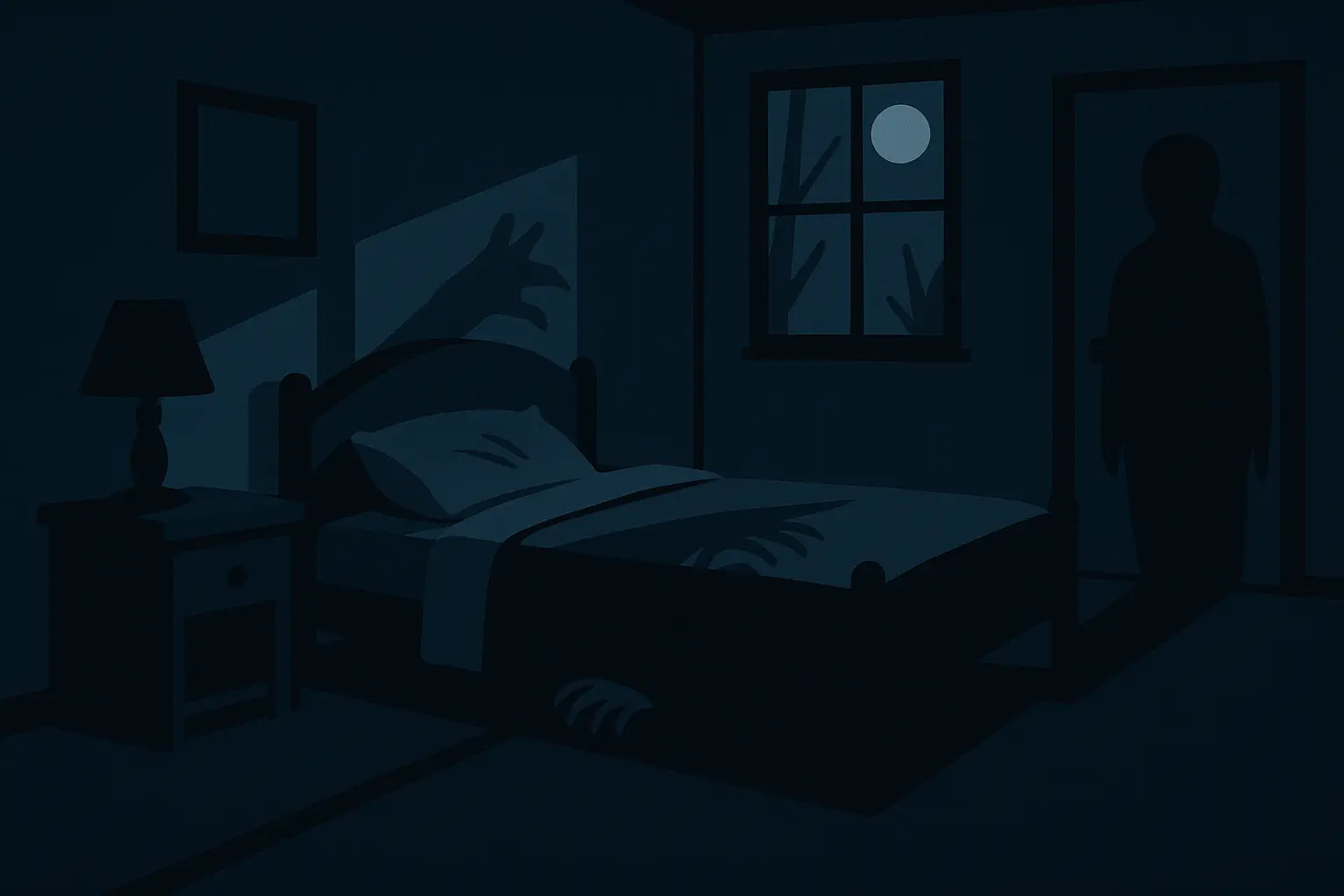
What Makes One-Sentence Horror Stories So Effective
Here’s the thing about one sentence horror stories – they don’t mess around. While regular horror stories spend chapters building up tension, these little nightmares hit you like a punch to the gut right away. They’re brutal in their efficiency, and honestly, that’s what makes them so damn effective.
Think about it this way: you’ve got maybe 20-30 words to completely mess with someone’s head. No room for flowery descriptions or slow character development. Just pure, concentrated fear.
They Hit You Immediately
There’s no warm-up period with these stories. You don’t get three paragraphs to settle into the mood – the horror starts with the very first word and doesn’t let up until the period. It’s like the difference between a slow-building thunderstorm and getting struck by lightning.
Your Brain Does Half the Work
The really clever thing about great one-sentence horror is that it makes you complicit in your own terror. The story gives you just enough information to understand something’s horribly wrong, then lets your imagination run wild filling in the gaps. And trust me, your brain will come up with stuff way worse than anything the author could explicitly describe.
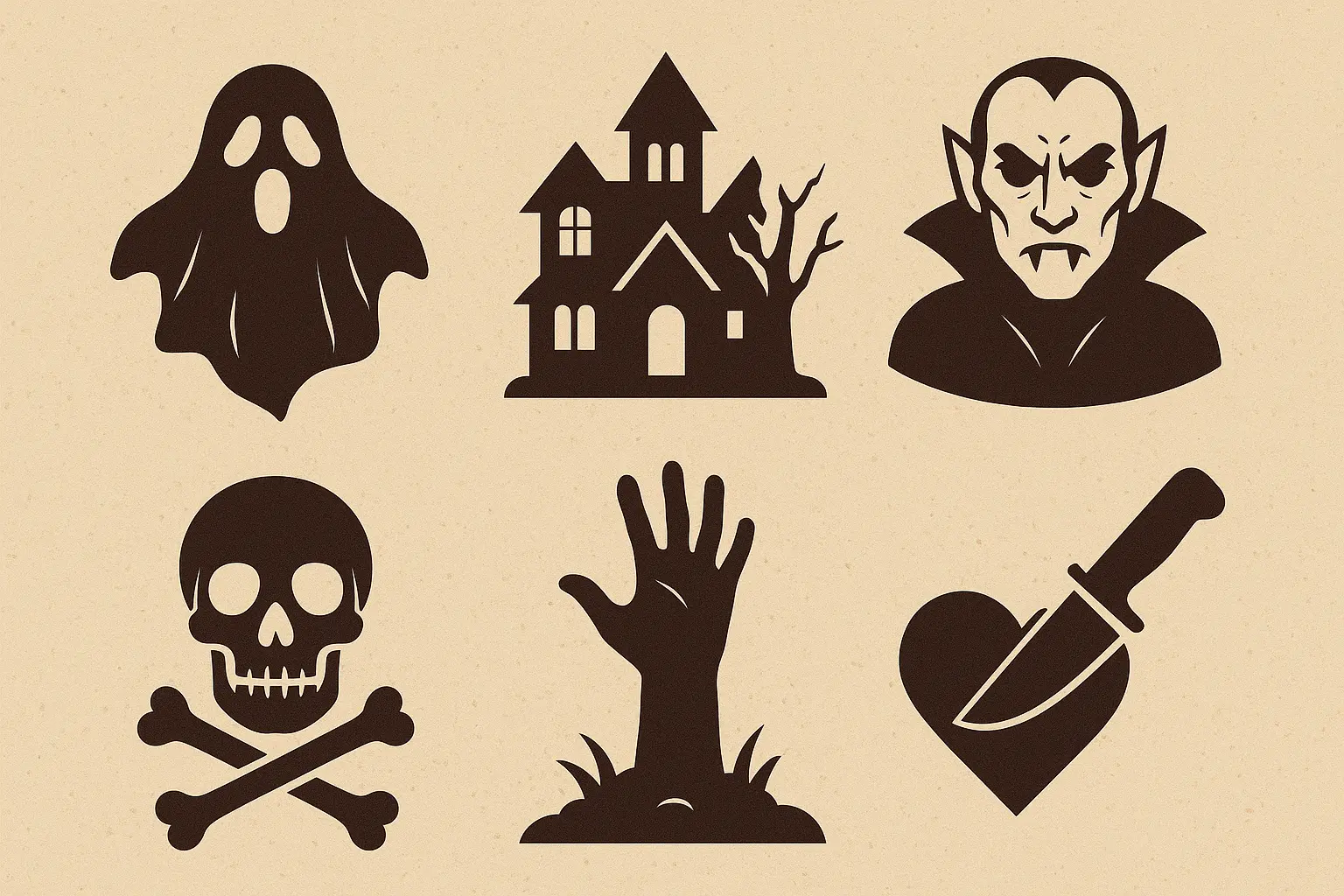
They Feel Complete
Even though you’re only getting one sentence, the best horror stories in this format don’t feel like fragments. You get a beginning, middle, and end – plus that gut-punch realization that makes you go “oh no” out loud. It’s like a magic trick where the magician shows you exactly what they’re doing, but it still works.
They Use Stuff You Know
The scariest one-sentence stories don’t involve monsters from other dimensions. They take perfectly normal things – baby monitors, family photos, your reflection in the bathroom mirror – and reveal the horror that was supposedly there all along. After reading a good one, you’ll never look at that ordinary object the same way again.
Every Word Earns Its Place
In longer horror stories, you can get away with some filler. Maybe a sentence that’s just there for atmosphere, or a description that doesn’t advance the plot. In one-sentence horror, every single word has to do multiple jobs at once. The word “3 AM” doesn’t just tell you the time – it establishes vulnerability, suggests parental routine, and creates that specific middle-of-the-night dread we all know too well.
They Stick Around
The best one-sentence horror stories are like mental splinters. They get under your skin and stay there. Hours later, you’ll be doing something completely unrelated and suddenly remember “oh yeah, that story about the family photo” and get a little shiver all over again.
25 Spine-Chilling One-Sentence Horror Stories
Alright, let’s get into the good stuff. I’ve organized these into categories because different types of fear hit people in different ways. Some folks are terrified by anything involving kids, others can’t handle technology gone wrong. While two-sentence horror gives you a bit more room to work with setup and payoff, these single-sentence stories have to deliver everything in one devastating blow.
Domestic Terror Stories
These are the ones that really get under my skin, because they mess with the places where you’re supposed to feel safest. Home should be your sanctuary, and these stories take that feeling and stomp all over it.
1. The Baby Monitor
“The baby monitor crackled to life at 3 AM with my daughter’s voice saying ‘Daddy, there’s someone in my room,’ but my daughter died three years ago.”
This one’s a masterclass in using familiar technology to deliver absolute horror. Every parent knows that specific anxiety of hearing something on the baby monitor in the middle of the night. The story takes that normal parental protective instinct and weaponizes it.
2. The Family Photo
“I smiled at our family Christmas photo until I realized there were six people in it, but only five of us live here.”
Simple math becomes terrifying when the numbers don’t add up. We trust photographs as evidence of reality, so when a photo shows something impossible, it shakes your faith in what you can believe. Plus, who’s that sixth person, and how long have they been part of the family without anyone noticing?

3. The Dinner Table
“Mom called us all down for dinner, but when I got to the kitchen, I found her car keys still sitting by the door and her coat hanging in the closet – she’d been dead for a week.”
This one gets me because it starts with something so normal and comforting. How many times have you heard “dinner’s ready” called from the kitchen? But then the physical evidence – keys, coat, the timeline – makes the whole thing impossible and terrifying.
4. The Bedtime Story
“Every night, I read my son a bedtime story, but tonight when I opened the book, the words read: ‘Tonight, Daddy won’t wake up.'”
Bedtime stories are supposed to be safe and comforting. They’re this ritual of protection and love between parent and child. When the book itself becomes a threat, it corrupts one of childhood’s most sacred spaces.
5. The Moving Day
“As we unpacked boxes in our new home, we found a family portrait of strangers – wearing our clothes and standing in our exact poses from yesterday’s photo.”
This one messes with your sense of identity and uniqueness. It’s not just that there are strangers in your house – it’s that they’ve somehow replicated your exact family dynamic, down to specific poses and clothing. The precision makes it so much worse than random intruders.
Identity Horror Stories
These stories attack your sense of self, which might be the most fundamentally terrifying thing possible. When you can’t trust your own reflection or your own memories, what can you trust?
6. The Mirror Reflection
“I waved at myself in the bathroom mirror, but my reflection waved back two seconds too late.”
We take mirror reflections completely for granted – they’re supposed to be instant and automatic. That two-second delay suggests your reflection has its own thoughts, its own agenda. Or maybe you’re not who you think you are.
7. The Medical Records
“The doctor showed me my X-rays and asked who had been living in my body for the past six months, because these bones belonged to someone else entirely.”
Medical professionals are supposed to be the ultimate authority on what’s happening in your body. X-rays don’t lie. So when a doctor tells you that someone else’s bones are inside you, it’s not something you can dismiss as imagination or mistake.
8. The Childhood Photos
“While cleaning out mom’s attic, I found my childhood photo albums – filled with pictures of a child who looked exactly like me, but I had never seen any of these photos before.”
This one plays with the reliability of memory versus photographic evidence. The photos prove you had experiences you can’t remember, which raises horrible questions about what else you might have forgotten – or what else might have been taken from you.
9. The Driver’s License
“I reached for my wallet to show ID, but the driver’s license photo showed a face I’d never seen before, with my name and all my correct information.”
Official documents are supposed to be proof of who you are. When your ID shows a stranger’s face with your information, it suggests either reality is breaking down or you’re not who you think you are. Either option is terrifying.
Technology Terror Stories
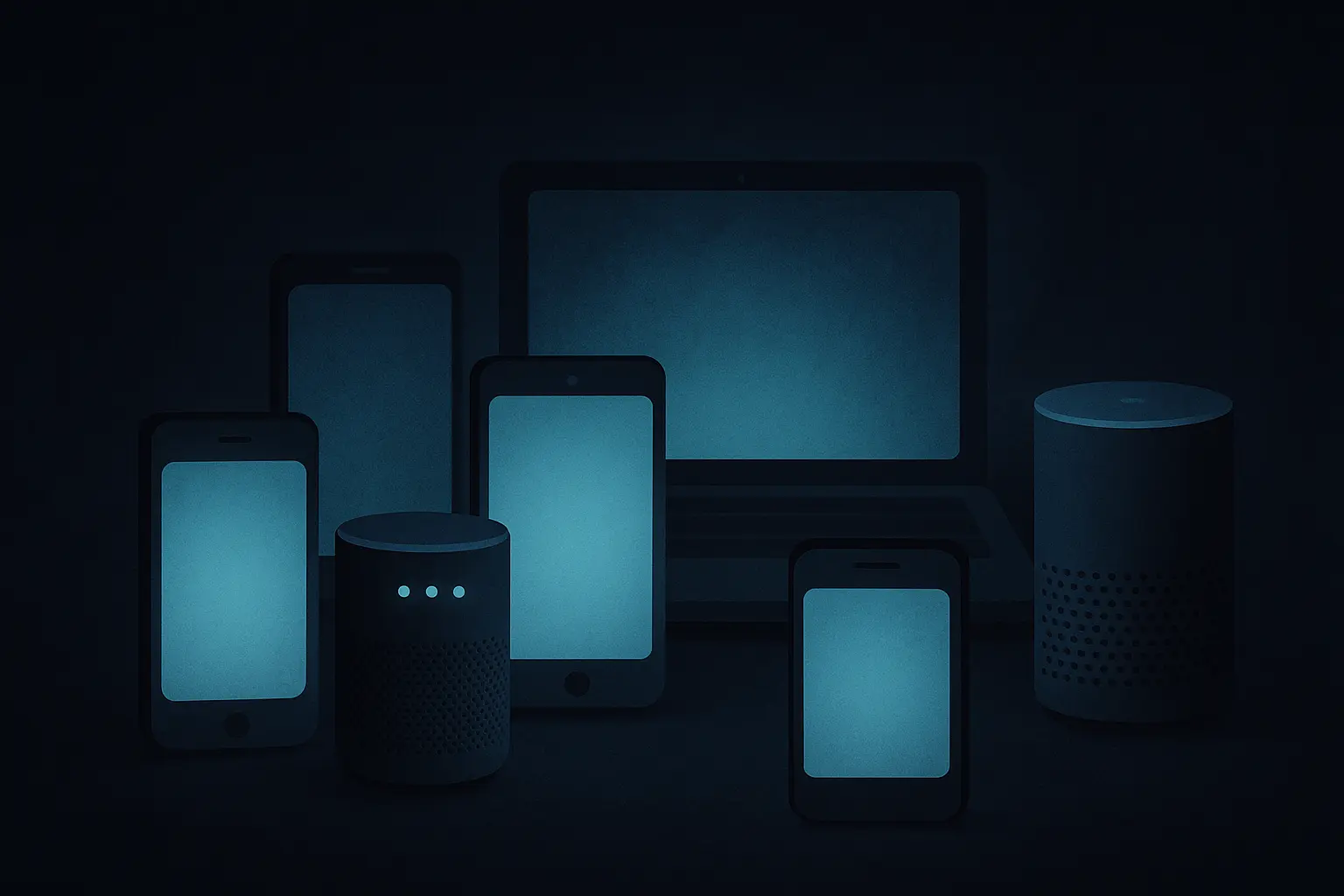
We’re all surrounded by technology we trust implicitly. These stories take that trust and reveal how easily it could be turned against us.
10. The GPS Navigation
“My GPS kept saying ‘turn right’ at every intersection, but there were no roads to the right – only graves.”
GPS systems are supposed to guide you safely to your destination. When your trusted navigation starts directing you toward death instead of your intended location, it raises the question: where exactly are you supposed to end up?
11. The Video Call
“During our family video call, my sister asked who the person standing behind me was, but I was alone in the room and my camera was off.”
This one exploits the disconnect between what we perceive and what others can see through technology. Your sister can see someone you can’t, through a camera that shouldn’t even be on. It makes you question everything about your immediate reality.
12. The Smart Home
“Alexa announced ‘Goodnight, Sarah’ every evening at 9 PM for three months, but my name is Jennifer and I live alone.”
Voice assistants are supposed to learn about their users and respond accordingly. When your device consistently acknowledges someone who doesn’t exist, it suggests either the technology knows something you don’t, or Sarah is more real than you realize.
13. The Photo Gallery
“My phone’s photo gallery showed pictures of me sleeping from angles impossible for me to have taken, uploaded every night for the past month.”
Your phone is supposed to be under your control, containing only photos you’ve taken. When it starts documenting your most vulnerable moments from impossible perspectives, it becomes a surveillance device with an unknown operator.
Temporal Horror Stories
Time-based horror is tricky in a single sentence because you have to establish the time distortion and its horrifying implications all at once. While two-sentence horror stories can use one sentence for setup and another for the time twist, these have to compress everything.
14. The Alarm Clock
“I woke up every morning at 6:47 AM to my neighbor’s screaming, but when I checked on her, she’d been dead for two years.”
Morning routines become nightmare fuel when they include impossible elements. The specificity of 6:47 AM makes it feel real and routine, which makes the impossibility of hearing a dead person even more unsettling.
15. The Calendar Pages
“Each morning I tore off yesterday’s calendar page, but today I found a stack of 847 pages from the same date.”
Time measurement becomes unreliable when the evidence suggests you’ve lived the same day hundreds of times. The specific number – 847 – makes it feel documented and real rather than just a vague sense of repetition.
16. The Time Loop
“I’ve lived this Tuesday 1,247 times, and today I finally figured out why – I’m the one who dies at 11:43 PM.”
This one builds to a revelation that recontextualizes everything. The time loop isn’t random torture – you’re trapped in your death day, experiencing your final moments over and over again. The precision of the count and time makes it feel calculated and inescapable.
17. The Aging Process
“I looked in the mirror and saw my 80-year-old self staring back, but when I blinked, I was 30 again – and I could feel the decades slipping away.”
Physical aging becomes unstable and terrifying when your reflection shows a different age than you feel. The sensation of “feeling the decades slip away” suggests time is physically affecting your body in impossible ways.
Childhood Terror Stories
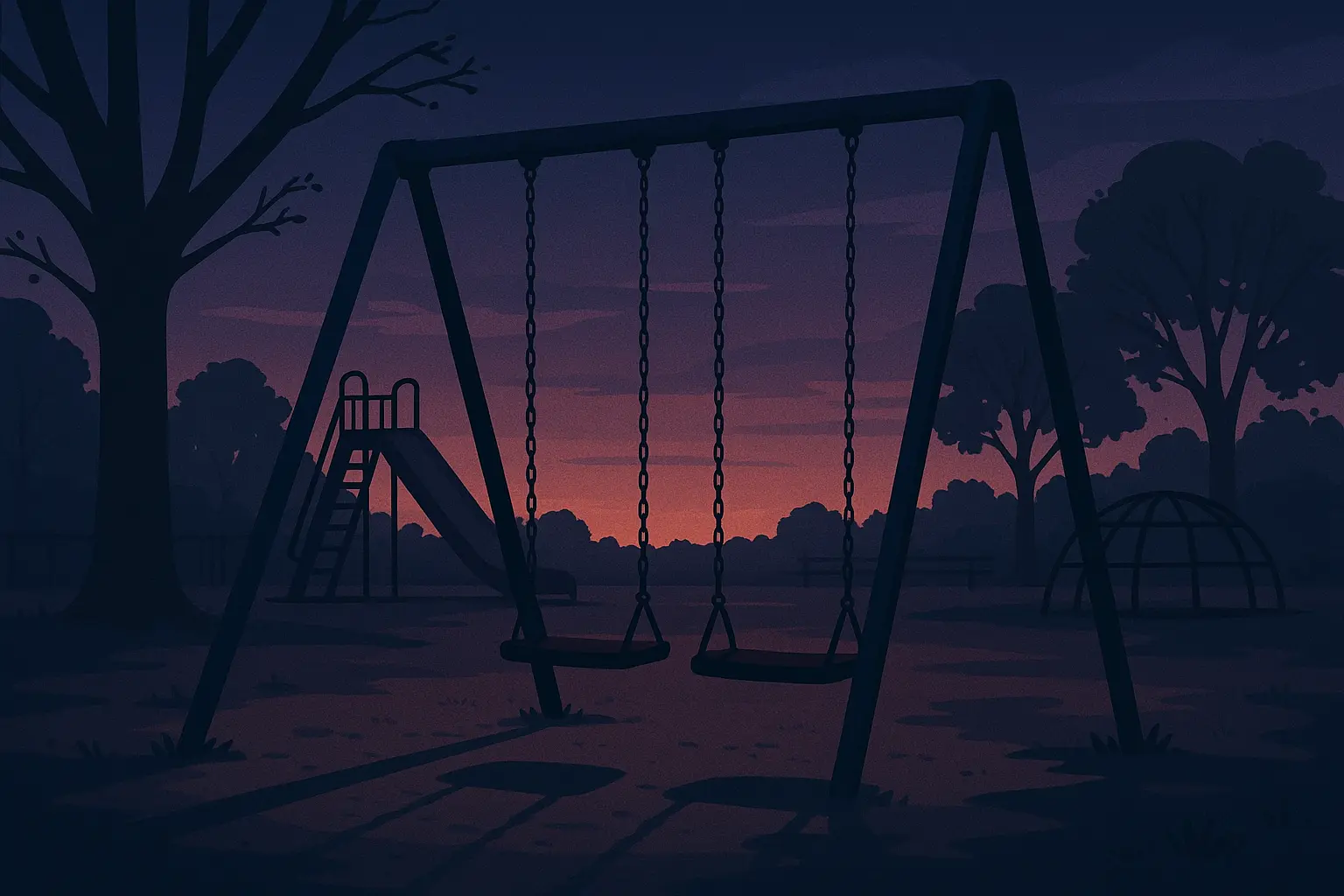
There’s something particularly unsettling about horror involving children, whether it’s their innocence being corrupted or their natural openness to things adults can’t see.
18. The Imaginary Friend
“My daughter’s imaginary friend finally agreed to meet me, and when I shook his very real hand, he whispered, ‘She can see us now.'”
Imaginary friends are supposed to stay imaginary. When they become physically real and acknowledge supernatural abilities with that “us,” it suggests your child has been interacting with something far more dangerous than innocent fantasy.
19. The Playground
“The children on the playground invited my son to play hide and seek, but when I looked closer, they were all wearing clothes from decades past and their faces were too pale.”
Children playing should be the most normal sight in the world. When the kids are dressed wrong for the time period and look physically wrong, it suggests your child is being invited to play with the dead.
20. The Lullaby
“I hummed the lullaby my grandmother sang to me as a child, until my neighbor asked why I was singing the song from her daughter’s music box – the one buried with her in 1987.”
Lullabies are supposed to be comforting family traditions. When your childhood song turns out to be connected to a dead child you never knew about, it creates a supernatural connection that spans generations and death.
21. The Drawing
“My five-year-old drew a picture of our family, but included a tall shadow figure standing behind us with the caption ‘He lives here too.'”
Children’s artwork often reveals their honest perceptions of the world. When your kid matter-of-factly includes a threatening figure that adults can’t see, it suggests children’s supposed “imagination” might be more accurate than adult perception.
Existential Dread Stories
These are the stories that mess with your understanding of reality itself. They’re often the most unsettling because they don’t offer any clear explanation or resolution.
22. The Empty World
“I spent all day in the city center calling out for other people, until I realized the silence wasn’t because the world was empty – it was because I was the only one making any sound.”
This one creates horror through the realization that you exist in a completely different reality than everyone else. You’re not alone because people are gone – you’re alone because you can’t interact with the world everyone else inhab its.
23. The Memory Gap
“Everyone insists I’ve been married to David for ten years, but I have no memory of him, our wedding, or our life together – and the photos prove they’re telling the truth.”
When external evidence contradicts your personal experience this completely, it raises terrifying questions about the reliability of your own mind and memories. What else might you have forgotten? What else might be real that you can’t remember?
24. The Final Day
“The news announced that today was the last day of existence, and everyone seemed relieved except me – because I was the only one who didn’t know what we’d done to deserve it.”
Universal knowledge that excludes you creates a special kind of existential horror. Everyone else understands why the world is ending and feels relief about it, but you’re left in terrifying ignorance about your own guilt.
25. The Observer
“I finally realized why I never felt like I belonged anywhere – I’m not supposed to be here, and now they’ve noticed I’m watching.”
This one taps into that universal feeling of not quite fitting in, then reveals it might be literally true. The suggestion that unknown entities have noticed your unauthorized observation creates paranoid dread about being discovered.
Breaking Down Why These Stories Work
Let me tell you why these stories get under your skin so effectively. It’s not just the creepy concepts – it’s how they’re constructed to mess with your head in very specific ways.
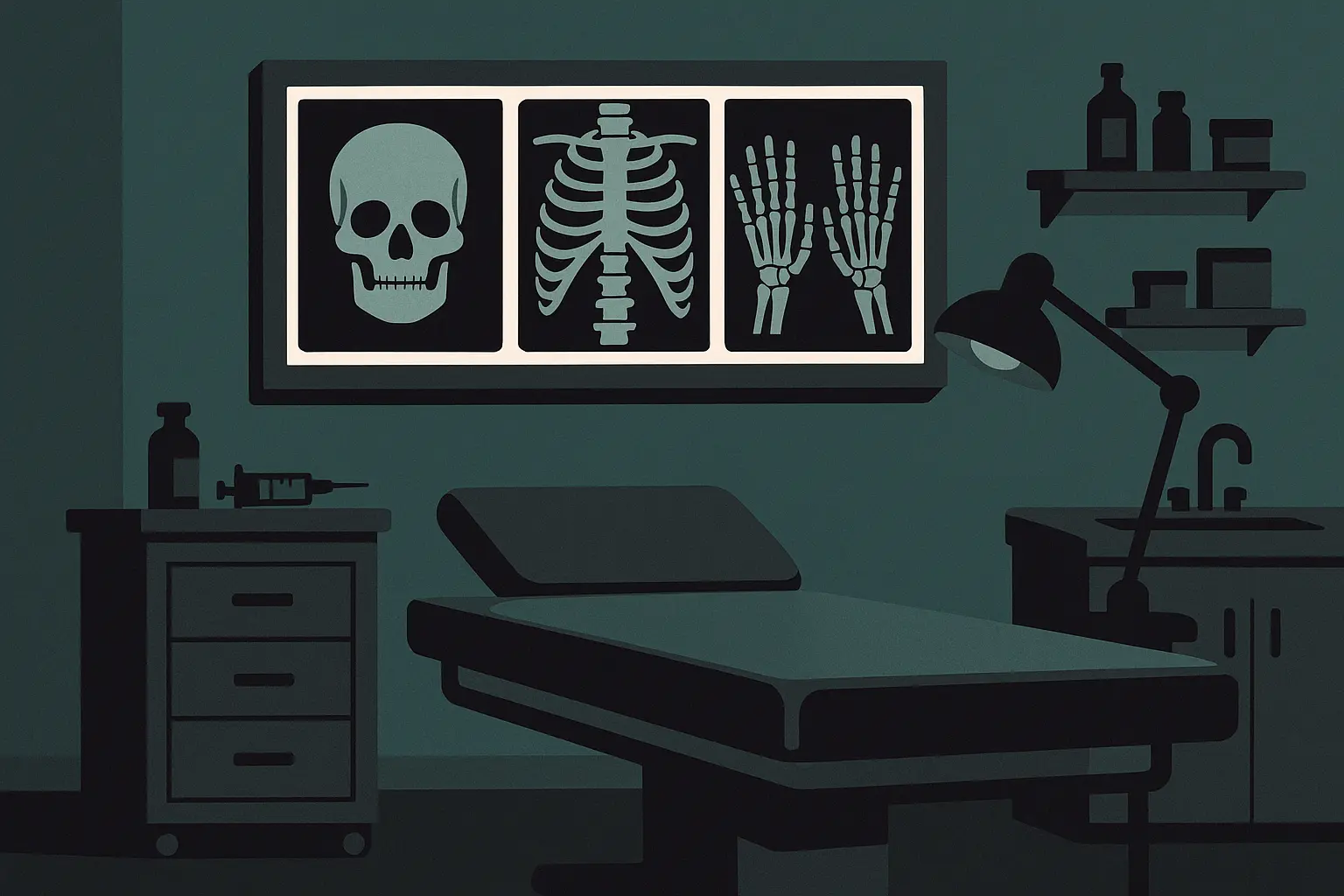
The Home-Based Horror Hits Different
Stories like “The Baby Monitor” and “The Family Photo” work because they corrupt the spaces where you feel safest. Your home is supposed to be your sanctuary, so when horror emerges from baby monitors and family pictures, it makes nowhere feel safe. These stories don’t just scare you – they make you suspicious of your own environment.
Take “The Baby Monitor” – it’s terrifying because baby monitors are supposed to help parents protect their kids, not deliver messages from dead children. That’s the kind of story that makes you want to unplug every device in your house.
Identity Horror Messes With Your Core Self
“The Mirror Reflection” works because we unconsciously expect our reflections to respond immediately. That two-second delay suggests either your reflection has independent consciousness or you’re not who you think you are. Either possibility is deeply unsettling because it attacks your fundamental sense of self.
“The Medical Records” combines scientific authority with body horror. X-rays represent objective medical truth, so when they show someone else’s bones in your body, it’s impossible to dismiss as imagination. The doctor’s authority makes the impossible feel real.
Technology Terror Exploits Our Daily Dependencies
We trust our devices completely, which makes their betrayal so effective. “The GPS Navigation” transforms helpful technology into something malevolent by directing you toward graves instead of roads. GPS systems are trusted guides, so their corruption suggests either supernatural interference or that you’re already dead.
“The Video Call” creates horror through the disconnect between what you perceive (being alone) and what others observe through technology (someone behind you). It makes you question whether your devices reveal truths your senses can’t detect.
Time-Based Horror Creates Existential Panic
“The Time Loop” builds to a revelation that recontextualizes everything. You’re not suffering random repetition – you’re trapped in your death day, experiencing your final moments repeatedly. The precision of “1,247 times” and “11:43 PM” makes it feel documented and inescapable.
Childhood Terror Corrupts Innocence
“The Imaginary Friend” violates the safe boundary between fantasy and reality when the friend becomes physically present. The whispered “She can see us now” suggests your child has supernatural abilities and has been interacting with dangerous entities disguised as innocent play.
What Makes Some Stories Hit Harder Than Others
Not all one-sentence horror stories are created equal. Some make you go “oh, that’s creepy” while others genuinely haunt you for days. Here’s what separates the good from the unforgettable:
Immediate Gut Punch vs. Slow Burn
Stories like “The Baby Monitor” and “The Mirror Reflection” hit you instantly. You read them once and immediately feel that “oh no” sensation in your stomach. These work because they tap into fears most people share – dead children, reflections acting independently.
Others like “The Memory Gap” and “The Observer” work more slowly. They plant seeds of unease that grow as you think about the implications. These stories mess with your head over time rather than delivering instant shock.
How Much Your Brain Has to Fill In
The best stories give you just enough information to understand something’s wrong, then let your imagination do the heavy lifting. “The Family Photo” works because it doesn’t explain who the sixth person is or how they got there – your brain starts generating possibilities, and they’re all terrifying.
Stories that explain too much lose their power. The mystery is what makes them stick with you.
Universal vs. Personal Fears
Stories that tap into universal experiences – like “The Baby Monitor” (parenting anxiety) or “The Mirror Reflection” (self-recognition) – tend to affect more people. But sometimes the more specific fears hit harder for the right audience.
The Completeness Factor
Even though you’re only getting one sentence, the best stories don’t feel incomplete. “The Time Loop” gives you a complete arc – the repetition, the realization, and the horrifying explanation. You understand the full situation without needing more information.
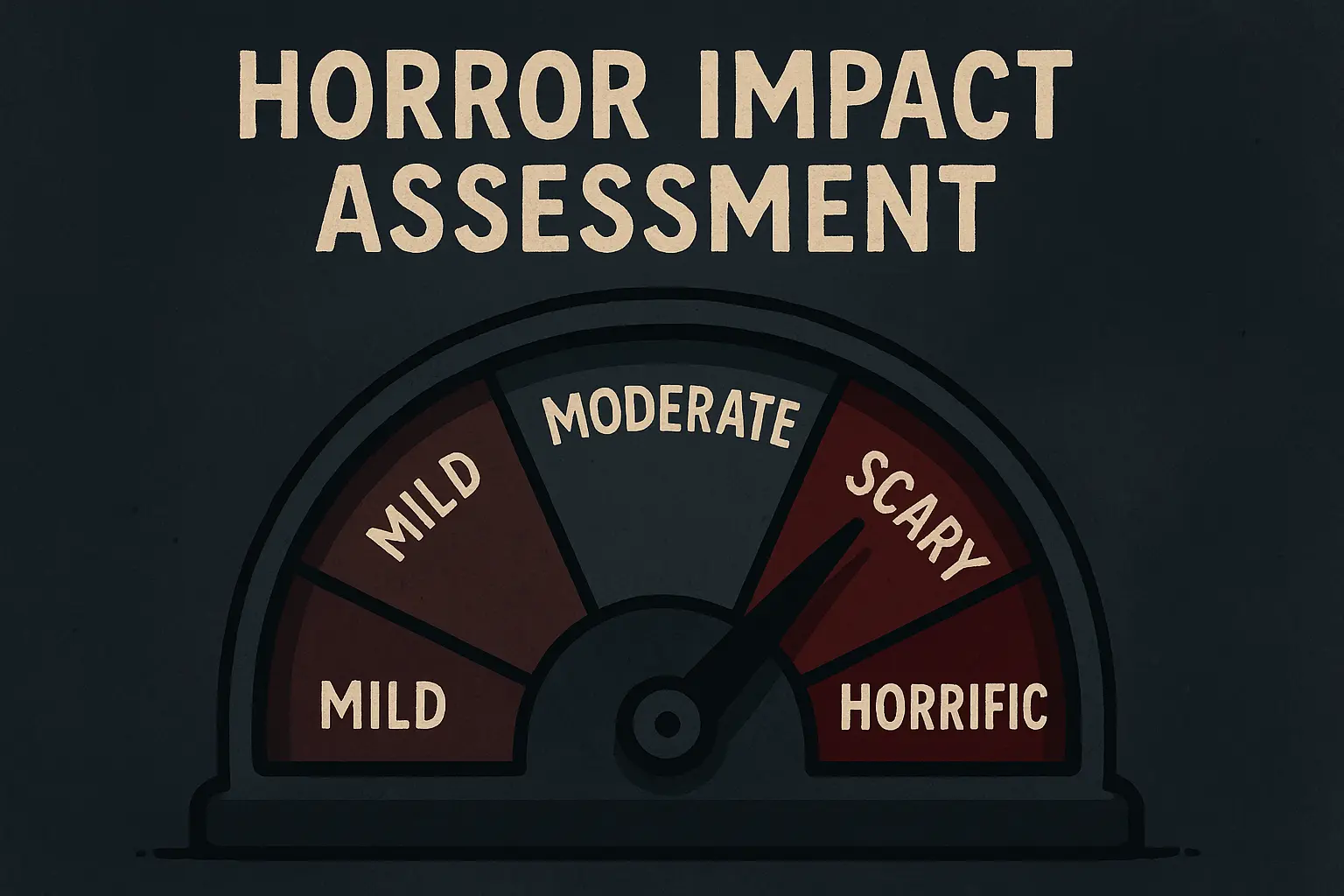
How AI Tools Can Enhance Your Horror Writing
Look, I’ll be honest – when I first heard about using AI for creative writing, I was skeptical. But after playing around with it for horror stories, I’ve got to admit it’s pretty useful, especially when you’re staring at a blank page at 2 AM trying to come up with something genuinely creepy.
Getting Unstuck When Your Brain Goes Blank
We’ve all been there – you want to write something terrifying, but your mind keeps serving up the same tired clichés. That’s where AI can actually be your friend. Instead of beating your head against the wall, you can bounce ideas off it like you would a writing buddy.
I’ve found AI story generators work best when you give them something specific to chew on. Don’t just say “write me a horror story.” Try something like “what if your smart doorbell kept announcing visitors who never actually show up?” Then take whatever weird idea it spits out and make it your own.
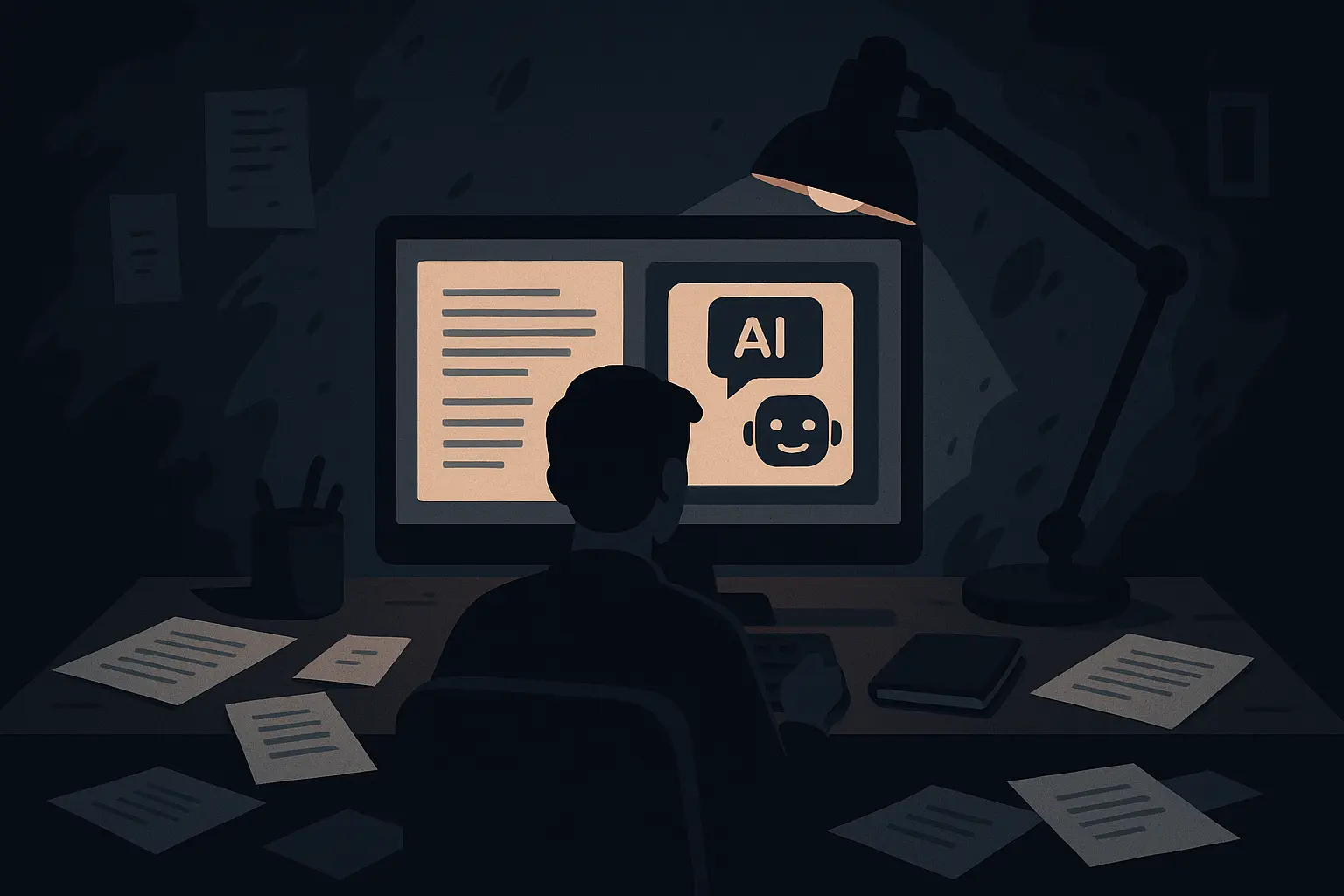
Making Every Word Count
The thing about one-sentence horror is that you literally cannot waste a single word. It’s like trying to fit an entire nightmare into a tweet. AI can help you find those perfect opening phrases that do triple duty – setting the scene, introducing the character, and delivering the creepy factor all at once.
For example, instead of starting with something generic like “I heard a noise,” you might get suggestions that immediately establish the horror: “My dead grandmother’s voice called me down for breakfast this morning.”
Finding Your Horror Sweet Spot
Different people find different things scary, and AI has gotten pretty good at understanding horror subgenres. Whether you’re into the slow-burn psychological stuff or prefer your terror with a side of supernatural weirdness, AI tools can help you stay in your lane while pushing your creativity in new directions.
I’ve used tools like horror story generators when I’m stuck on a particular type of fear. Sometimes you think you want to write about haunted houses, but the AI suggests something about corrupted technology that sparks a whole different (and better) idea.
The Reality Check
Here’s the thing though – AI isn’t going to write your masterpiece for you. It’s more like having a really enthusiastic brainstorming partner who never gets tired and has read every horror story ever written. The best results come when you use it to get past your initial creative blocks, then put your own spin on whatever ideas emerge.
Think of it this way: AI might suggest “Your reflection waved back too late,” but you’re the one who decides to make it two seconds late instead of one, or adds the detail about being in your childhood bathroom. Those human touches are what turn a decent concept into something that actually haunts people.
Professional writers can explore specialized tools such as Nairrate’s horror story generator to develop initial concepts that can be refined into single-sentence masterpieces.
A writer struggling with a technology horror concept might input: “Write a one-sentence horror story about a smart home device.” AI might suggest: “My smart doorbell started announcing visitors who died before they could ring it.” The writer can then refine this concept, perhaps changing it to: “My smart doorbell keeps announcing ‘Your 3 PM appointment has arrived,’ but I’ve been dead since 2 PM.” This collaboration process helps writers discover new angles and refine concepts.
The precision required for effective one-sentence horror directly parallels skills that AI helps develop across all compressed narrative forms. Whether crafting flash fiction, developing story starters, or generating creative prompts, AI understands that maximum impact often emerges from maximum efficiency.
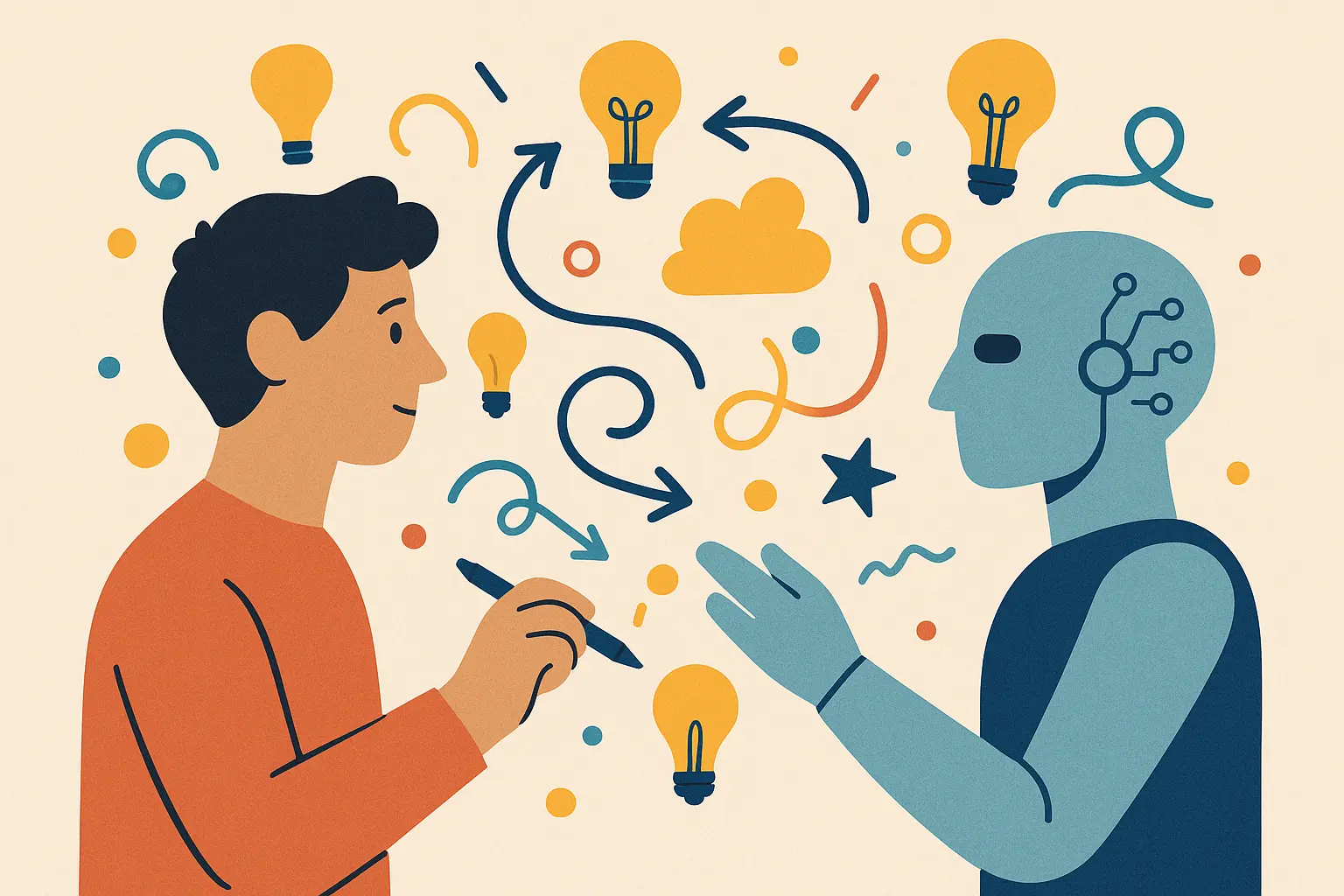
Ready to craft horror stories that haunt readers long after the final word? Nairrate’s AI-powered writing tools can help you master compressed terror techniques and create one-sentence nightmares that will keep your audience awake at night.
Final Thoughts
Honestly? One-sentence horror stories are some of the hardest things to write well, and some of the most satisfying when you nail them. There’s something almost magical about cramming an entire nightmare into a single sentence that sticks with people for days.
What I love most about the 25 stories we looked at is how they prove you don’t need pages of buildup to genuinely scare someone. Sometimes the most terrifying thing is what you don’t explain – that gap where your imagination fills in all the horrible details the author left out.
These stories work because they hijack stuff we all deal with every day. After reading “The Baby Monitor,” you’re going to think about it the next time you hear static on any electronic device. “The Family Photo” will pop into your head when you’re looking through old pictures. That’s the mark of effective horror – it follows you home.
If you’re thinking about trying to write some of these yourself, my advice is simple: start with something that already makes you a little uncomfortable, then ask “what if this got worse?” The best one-sentence horror stories feel like they could actually happen, right up until the moment they absolutely couldn’t.
And remember – if a story makes you check your locks twice or avoid looking in mirrors for a while, the writer did their job. These aren’t just creative writing exercises; they’re tiny doses of nightmare fuel designed to stick around long after you’ve finished reading.
The really good ones? They change how you see ordinary things. And honestly, isn’t that what the best horror has always done?



Add comment